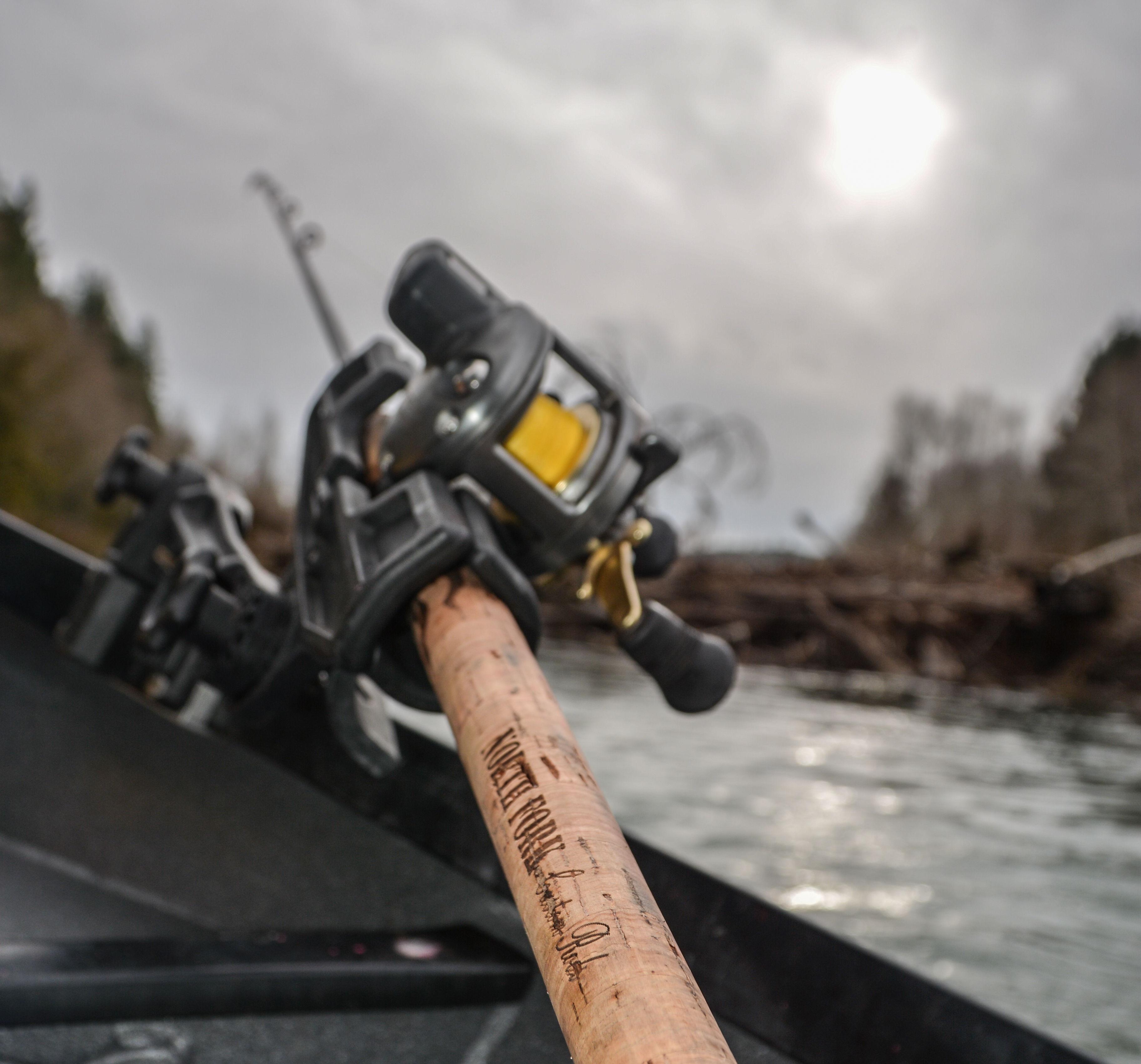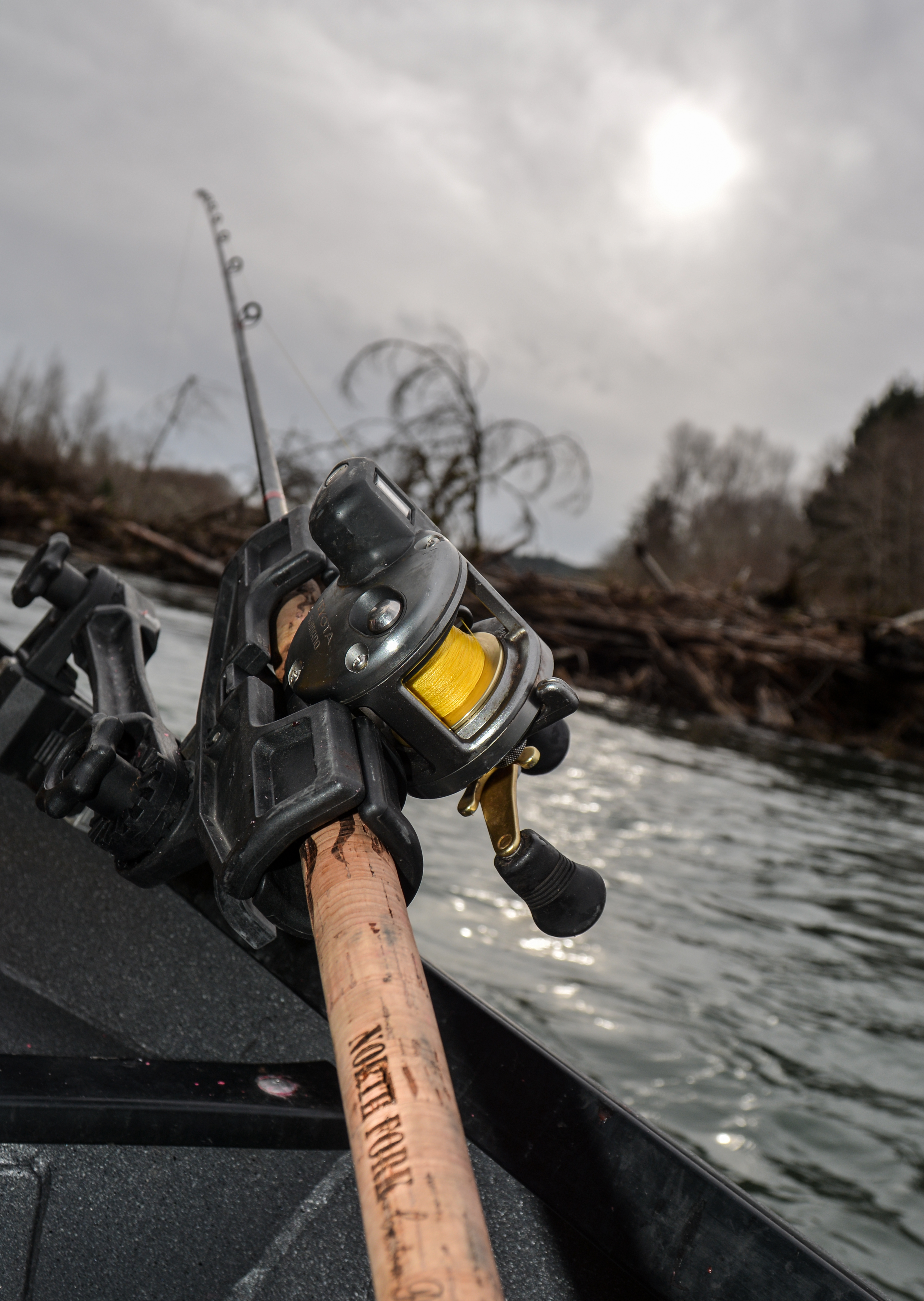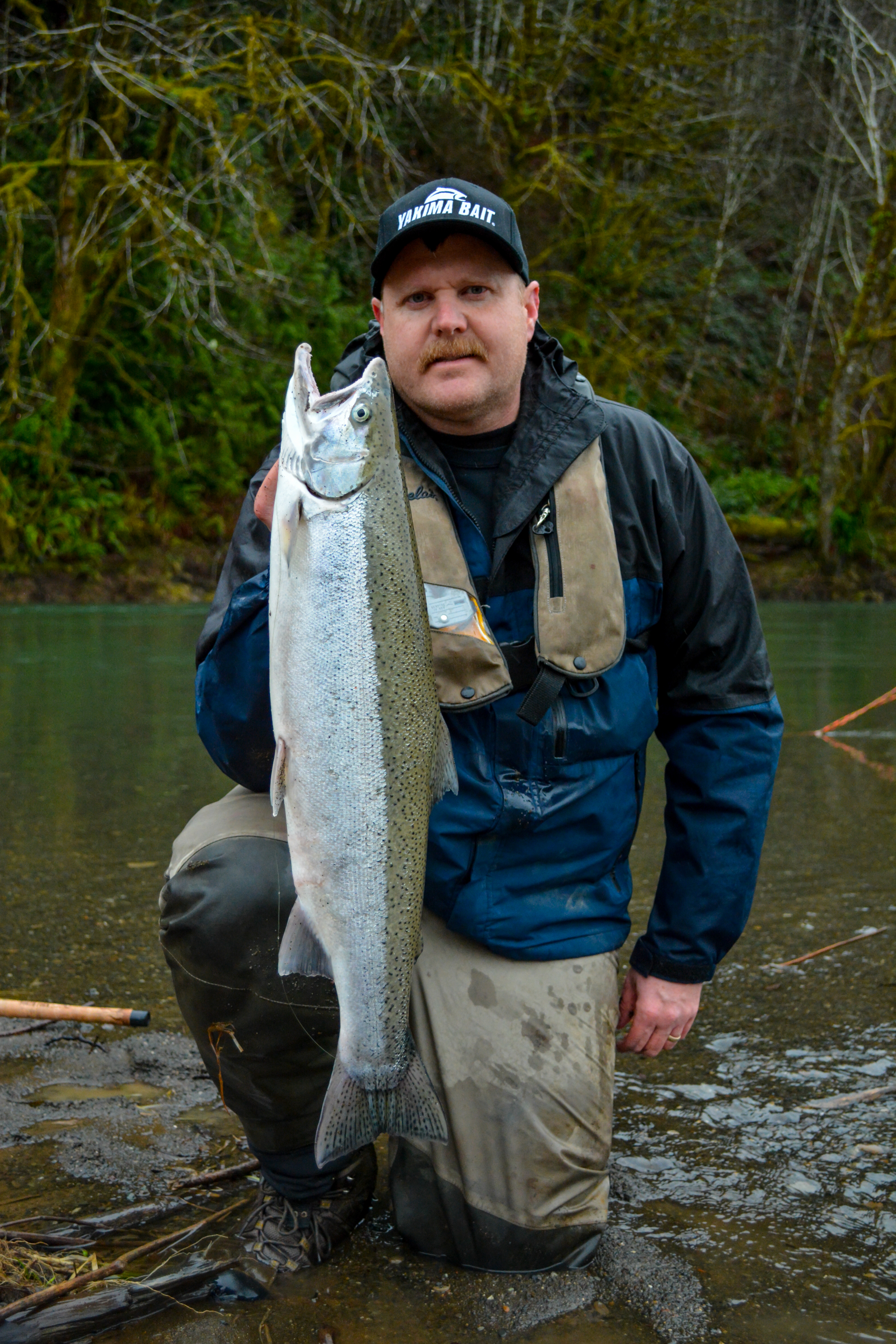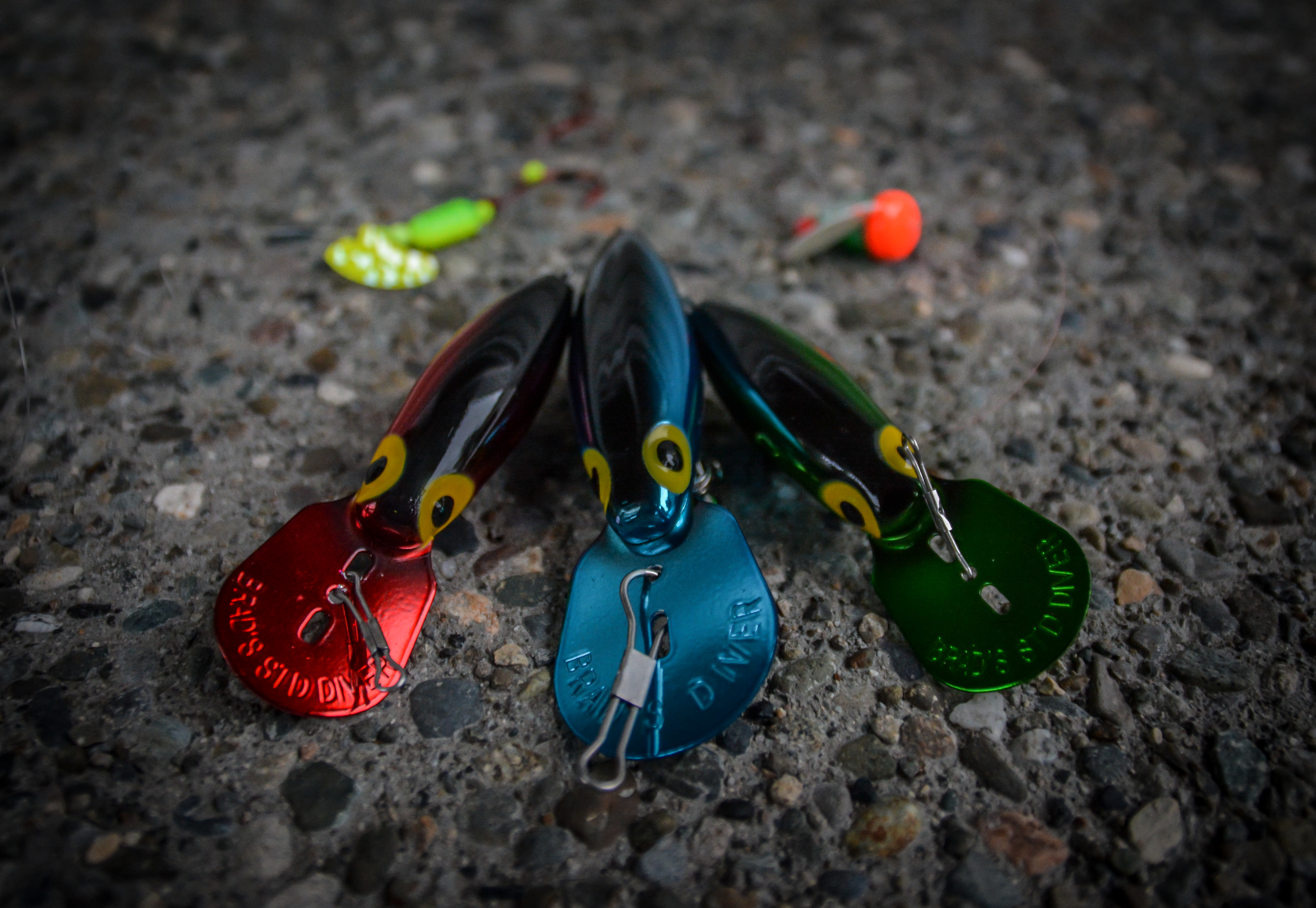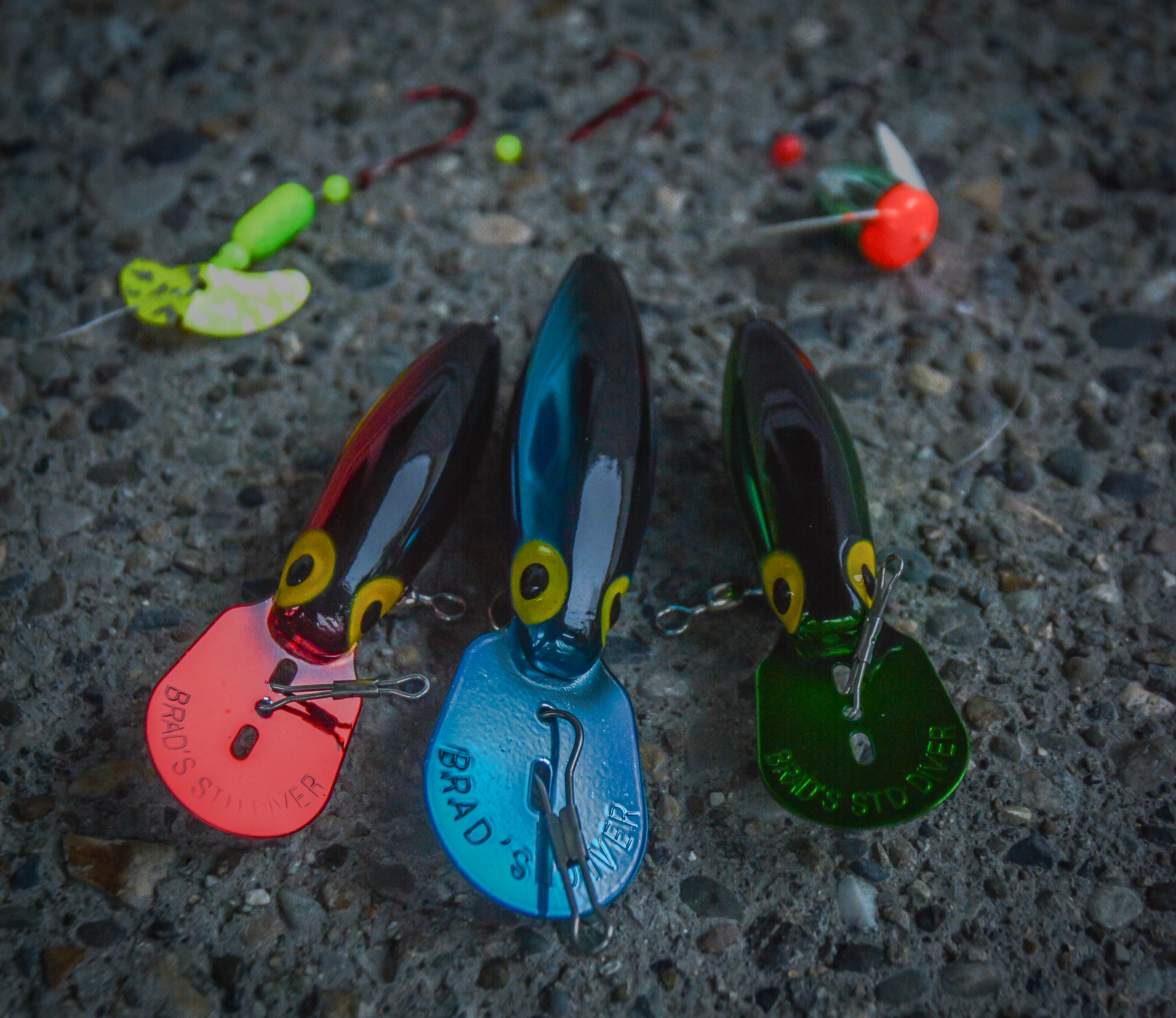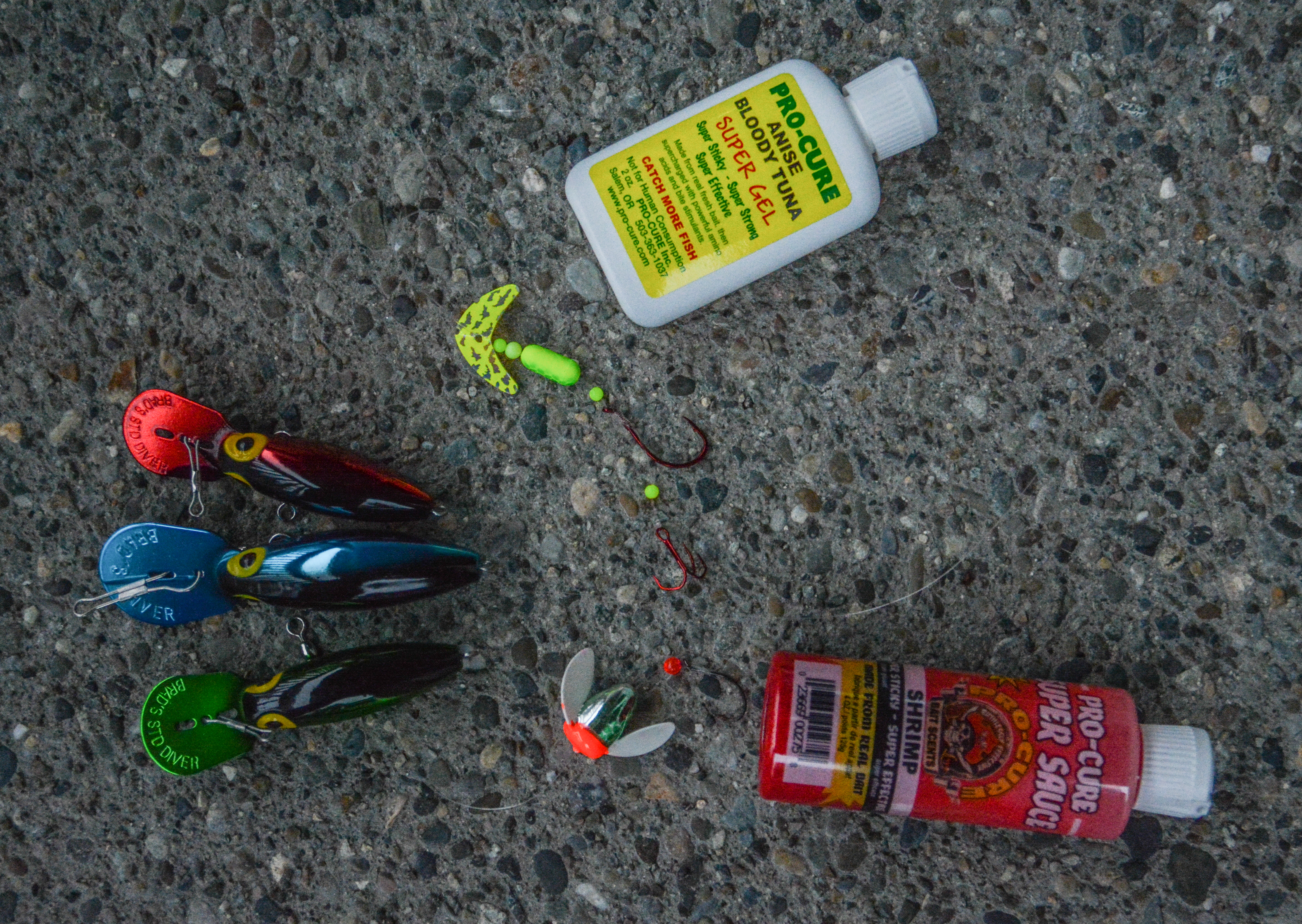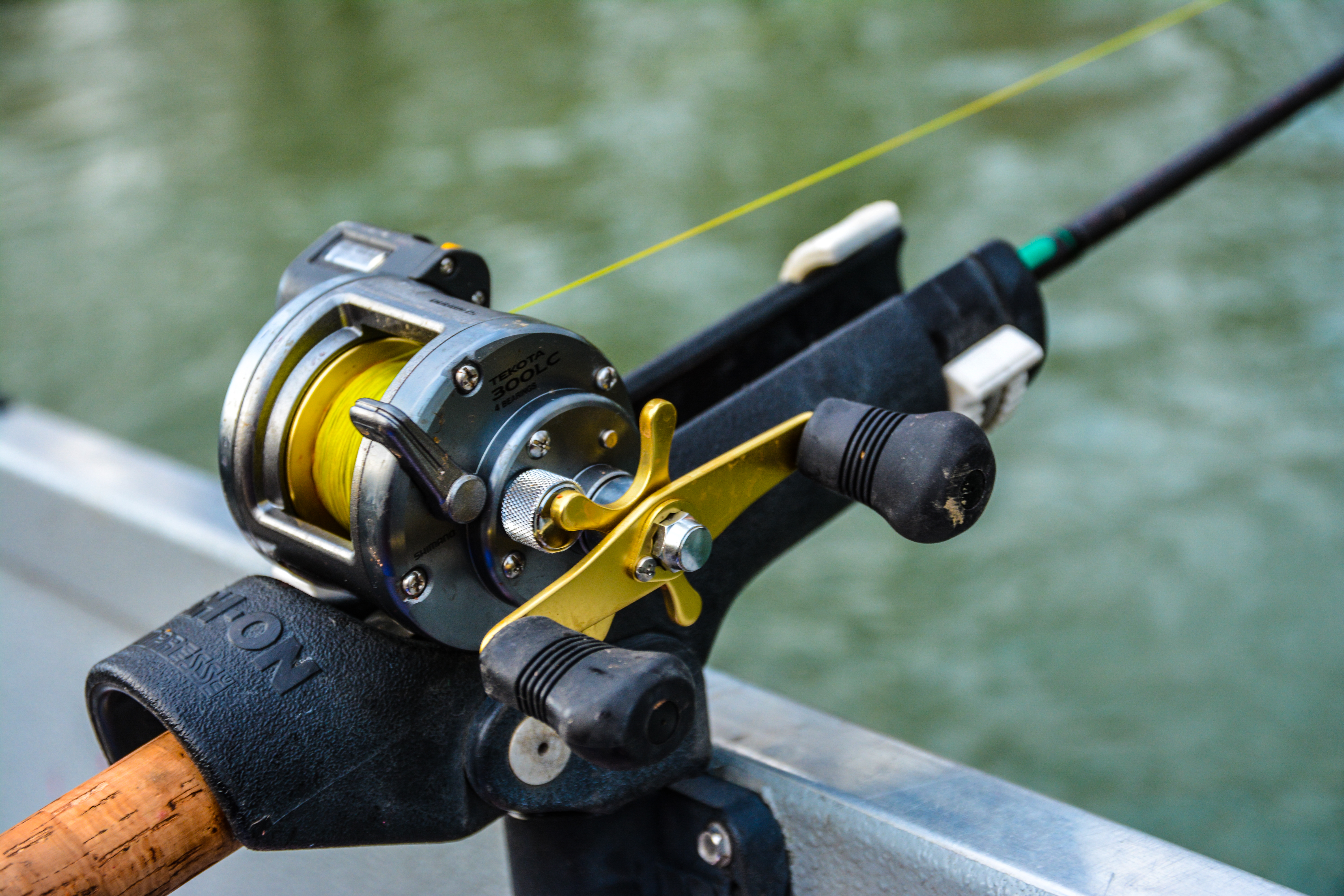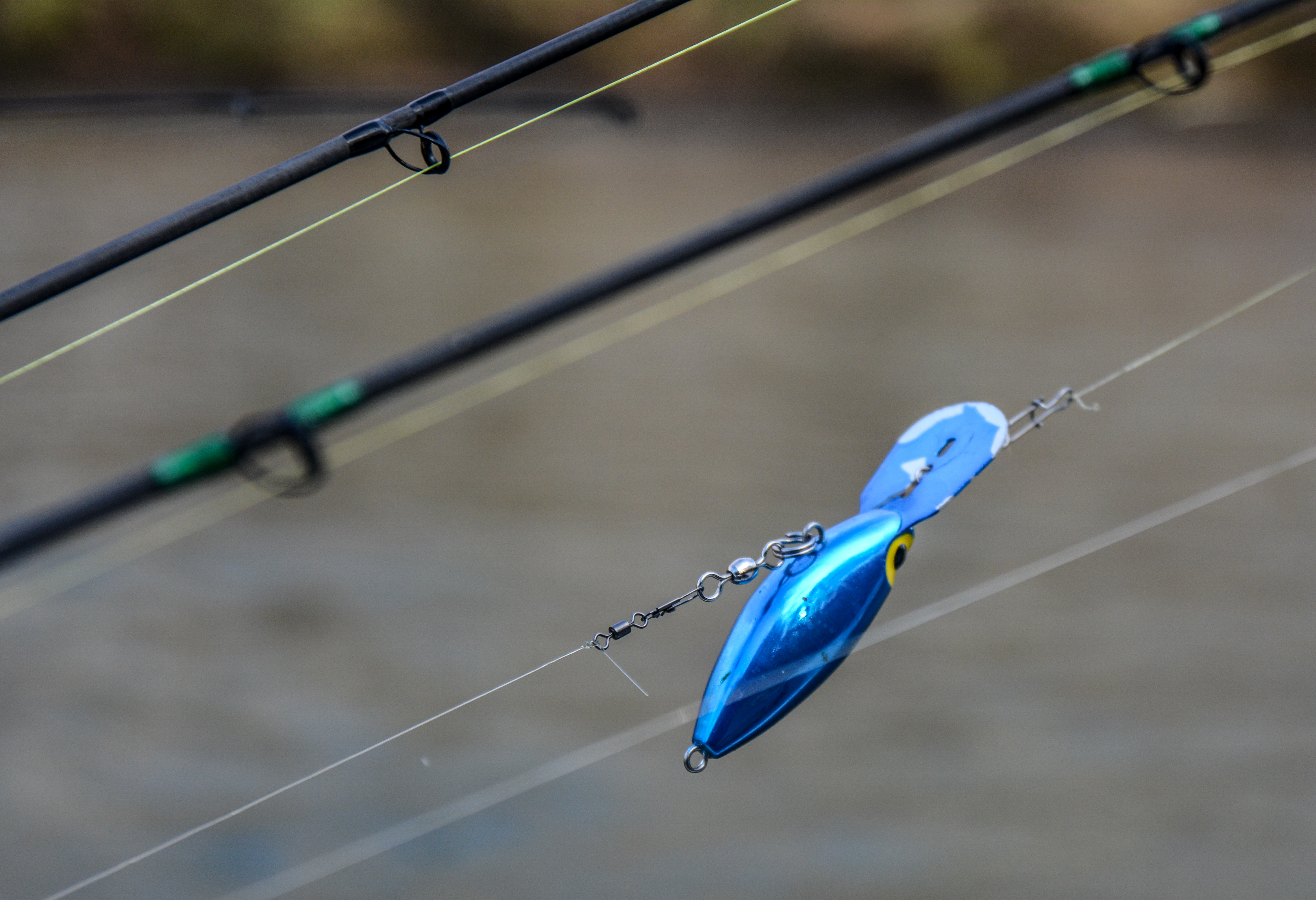Search
Latest Articles
Bait Divers for Steelhead
by Jason Brooks, February 04, 2018
Much like pulling plugs the use of a bait diver works in similar ways. There are a few differences that the angler needs to be aware of so not to fall into the trap of thinking you already know how to fish divers if you already pull plugs. The first being of course using bait. Sure plug anglers often wrap the plugs with a bait but using a diver is much different. The idea is not to have the steelhead bite the diver or plug but instead bite the bait. This means you can’t put out the diver combo and just let it sit like a plug. The bait’s need to be checked to make sure they are working properly, especially when using delicate baits such as sand shrimp or coonstripe shrimp. Another difference is that the diver gets the bait down to the fish’s level and that means the diver itself needs to be strong enough and big enough to find the rivers bottom and stay there. Plugs should be near the bottom of the river but not necessarily on the bottom. Most divers have a metal bill for this reason, and the ones with the plastic bills need to be checked for cracks and damage from banging along rocks all day. Another difference is that the bait will be on a leader behind the diver so you need to take this into account when backing it slowly down into a root wad or other river obstruction where steelhead are known to hold.
Before we get into the technical part of pulling bait divers you need to make sure you have the right gear and it is set-up correctly. The rod is your basic level-wind plug pulling rod, around seven to eight feet with a strong backbone and fast action tip. You really need that fast action tip so you can “read” what your diver is doing. Reels should be small profile line counter’s. Mainline is up for debate. Some like to use braid in thirty to fifty-pound test and other’s like using monofilament as the stretch helps hold fish when they quickly grab the bait and run. Either way, the mainline should be “hi-viz” such as bright yellow or green so you can see the line and read what it telegraphs back to you. Personally, I’m a big fan of 15-pound Izorline XXX monofilament in Hi-Viz yellow as it is soft and strong. Unlike the set-up for pulling plugs where anglers will use a clear or green monofilament shocker to help aid in mainline concealment to the plug, there is no need for this when using bait divers as the leader from the diver to the bait does this for you. If you use braid this will result in fewer lost divers.
A duo-loc snap at the end of the mainline helps in switching out the diver quickly as well as aids in “tuning” with the diver. Plugs need to be perfectly tuned but divers are designed slightly different with larger bills that helps them dive deep and make contact with the rocky river bottom. You still need to make sure it is balanced and not pulling too far from one side to another but for the most part divers can easily be fished right out of the package with a few exceptions. There are various styles and brands of divers but the Brad’s Bait Divers from Brad’s Killer Fishing Gear run true right out of the box and come in two main sizes, magnum and standard. For most steelheading, when the rivers are at normal flows, the standard size works well. In high water though it’s best to move up to the larger size. Blue, red, green and black are the most common colors. Red spectrum loses its color fast in the water but the metallic finish often helps draw fish over to your bait being pulled behind the diver. Black is good on days where the water is cloudy and blue is a good “all around” color. You will notice that the colors are fairly subdued compared to most plugs. The idea of the diver is to get your bait down in front of the fish and only secondary as an attractor.
Rigging the diver is simple. By using a duo-loc snap on your mainline to the divers bill it keeps it running true. During the late fall when leaves are still falling off the trees you can run some tee beads on the mainline with a bobberstop knot and a bead two feet in-front of the diver. The diver will have either one or two places to attach your leader, depending on the style you choose. For the Brad’s divers they come rigged ready to fish with belly eye having a split ring to a high quality swivel helps keep the leader from twisting behind the diver.
A monofilament leader, such as Izorline Platinum in clear ten to twelve-pound test, from twenty-four to thirty-six inches is a good length. You can go a bit shorter if you want to use an attractor such as a Spin-n-Glo or the Mack’s Lure Shrimp Rig as they both are buoyant and you want to keep your bait near the river’s bottom. You can also run a plain bait which works best with the coonstripe shrimp as they tend to wobble naturally with their curved profile. If you want to use them with an attractor then one “trick” is to straighten them with a toothpick. For sand shrimp use a tandem snelled leader with two size 1 or size 2 Gamakatsu octopus hooks and rig it so the sand shrimp is stretched out with no bend as this will cause line twist as well as the bait will fall apart in most currents. One other thing to do when fishing sand shrimp, since they are a delicate bait, is to use a bobberstop knot and bead behind the Spin-n-Glo to keep it from sliding down onto the sand shrimp and putting pressure on it causing it to fall apart. Don’t forget that this way to rig a bait diver is also very effective with night crawlers. Fish them the same way you would fish the sand shrimp. Another benefit to using a shrimp rigging like the one from Mack’s Lure is the easy application of scent. Pro-Cure Super Sauce is very sticky and you can apply it heavily onto the attractor. This allows you to add scents, such as anise, bloody tuna, or salmon egg, that might turn on the bite. You can also put the scent onto the bill of the diver which will then disperse it as it wiggles.
Where to fish bait divers and bait is what makes this technique so effective. Like fishing plugs the idea is to put the bait in front of fish, either resting or moving. Unlike drift fishing or any other type of fishing where you are stationary and trying to cast to where a fish might be, and the very brief encounter, pulling bait divers is used to increase the exposure of the bait to the fish. When fishing high water steelhead will look for slower or “soft” water to move upstream as well as rest in. The most obvious of places is when you see a point or current break jutting out from the river’s edge. Position the rod tips to where they are pointing just off of the current breaks and slowly work your way down to the point and holding steelhead or fish that are leaving the resting waters and making their way upriver.
A small pocket or backwater area has three distinctive places where to find fish. The first of course is the head of the pocket, which is usually a point or break. As mentioned above, here is where you are going to find fish that are about to move upriver or are on the move. The next spot is right in the middle, where the water is the most calm. Fish here are resting and if you find one of these places that offers cover, such as an overhanging tree, then the fish will most likely be here the longest and you have your best chances of hooking them. These areas are often the places you pass by while drift fishing and try to cast into for the few feet of opportunity they offer. When pulling bait diver’s you can leave your bait in this “pocket” much longer which is why you will increase your opportunity of hooking a fish than if you drift fish it. The last part is the end of the pocket, which is actually the first place the steelhead will swim into after making its way out of the main current. The fish just came out of swift water and really doesn’t want to be hindered. Plug anglers know this and it is much like a tailout, where the fish is aggressive, as they don’t want to back down the river. These fish don’t want to be forced out of the pocket they just entered and will strike at things that are in their way. When drift fishing most anglers never get to fish here because they have to pull their baits before they get hung up on whatever obstruction is creating the current break or bottom end of the pocket.
If you ever drift fished a spot for a while with no avail only to have another angler step in and catch a fish in front of you, this is most likely because they were able to get their bait to a spot that you missed. Same thing when using a bait diver and root wads or other obstructions. Like pulling plugs, this technique allows you to fish in tight spots where the fish are holding but anglers who are casting can’t reach or get their bait down to before tangling up. Plugs often draw anger strikes or impulse strikes, but bait divers are an “eating” bite which often results in a better “take-down to hooking” ratio and even an increase in bites over plugs as the fish is eating the bait not just striking at it.
Don’t overlook flats either. The plug angler usually puts the plug rods away and drift fishes or bobberdogs the long flats until they get to the next “plug spot”. Since you are essentially fishing bait, keep rowing and work your way down the long flats, making sure to back the divers along any seems or boulders. Just be ready on the oars, as more than once while backing down the side of a boulder creating a current break, a steelhead has grabbed the bait and I had to pull hard on the oars and away from the boulder.
When you do see your rod tip start to bury make sure to leave it alone. The fish might miss the bait on the first try and will often come right back to take it again. Just like when pulling plugs, let the hooks and the fish do the work. The worst thing an angler can do is grab the rod and try and set the hook. What you are really doing when pulling back is to pull the bait away from the fish. Since the bait is stationary in current and the fish reacts to the hook penetrating the jaw, the fish will turn and try to pull away from the bait and diver, this causes the hooks to set. The only thing you will do by “setting the hook” is pull it out of the fish’s mouth and miss the chance at the fish.
Once you have hooked a fish you need to remember that you have a bait diver that is designed to use the force of current to pull it downward. Once you lift the rod and start pulling to one side or another the diver often works against you so it is important to fight the fish correctly. You need to apply steady pressure allowing the rod to act as a large spring to take up any slack or directional pull. Reeling in at a constant rate helps keep any slack from occurring, and of course when a fish starts to run, let it but make sure you keep tension on the fish. Bait divers work against you much like a flasher or dodger does when fishing in the saltwater or lakes. Divers also tend to hang up in the landing net so it’s important to make sure the fish is ready to be netted before you try. More than once a fish was still fresh and we tried to net it too soon only to have the diver catch in the bucket and the fish break free.
When the water is high give bait divers a try. You will be surprised at how many fish you will catch. This technique is great when you are taking new anglers out who can’t cast very well. Plus ,on cold days the anglers in the front of the drift boat can keep their hands in their pockets and the oarsman will get a good workout to keep them warm. Bait divers are great for high water steelheading.
Jason Brooks hails from North-Central Washington. The son of a fishing guide, Jason is an avid hunter, angler, outdoor photographer and published writer. He resides in Puyallup with his wife and two boys.
